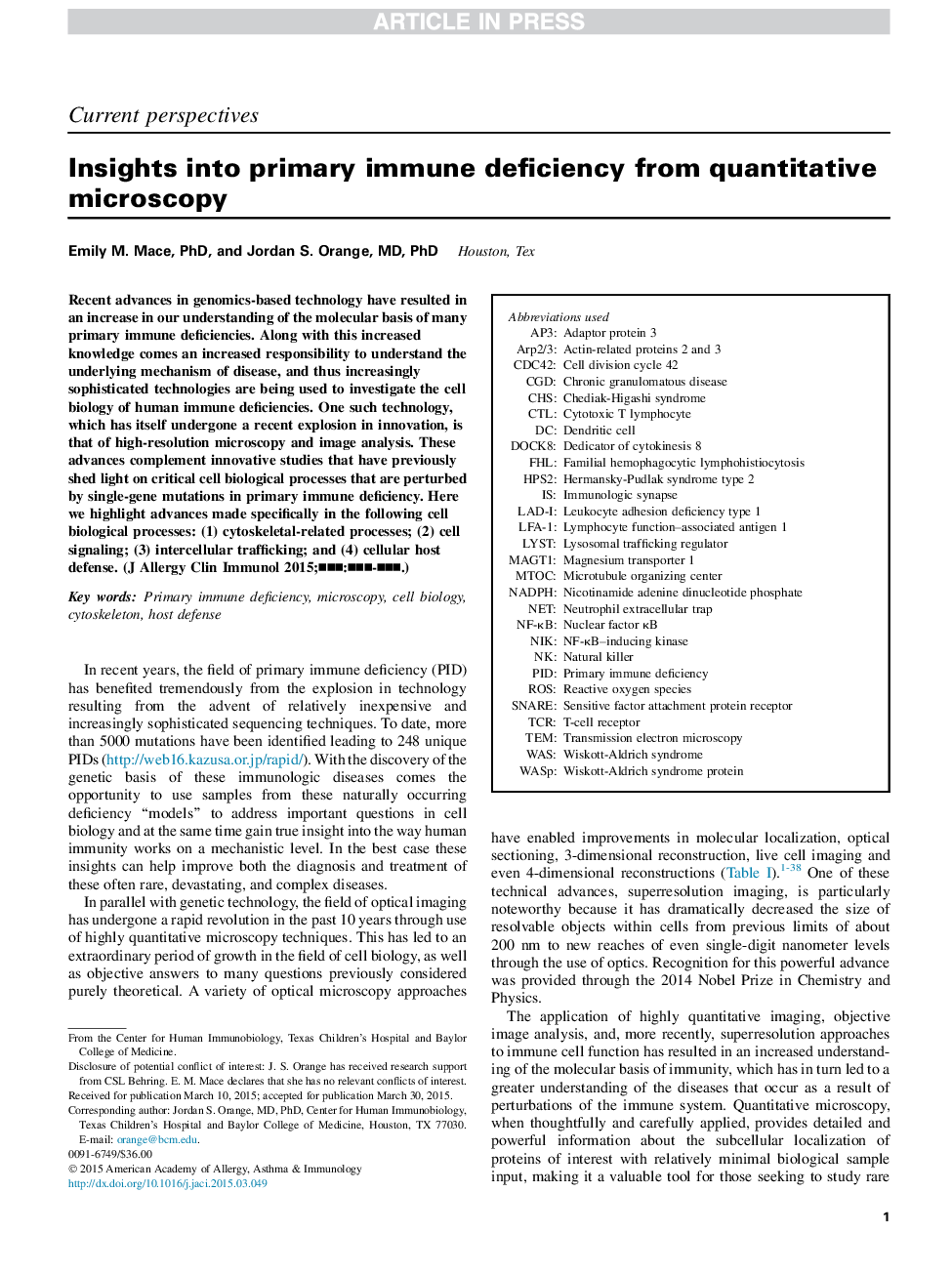| Article ID | Journal | Published Year | Pages | File Type |
|---|---|---|---|---|
| 6063210 | Journal of Allergy and Clinical Immunology | 2015 | 13 Pages |
Abstract
Recent advances in genomics-based technology have resulted in an increase in our understanding of the molecular basis of many primary immune deficiencies. Along with this increased knowledge comes an increased responsibility to understand the underlying mechanism of disease, and thus increasingly sophisticated technologies are being used to investigate the cell biology of human immune deficiencies. One such technology, which has itself undergone a recent explosion in innovation, is that of high-resolution microscopy and image analysis. These advances complement innovative studies that have previously shed light on critical cell biological processes that are perturbed by single-gene mutations in primary immune deficiency. Here we highlight advances made specifically in the following cell biological processes: (1) cytoskeletal-related processes; (2) cell signaling; (3) intercellular trafficking; and (4) cellular host defense.
Keywords
CDC42NF-κB–inducing kinaseChediak-Higashi syndromeLeukocyte adhesion deficiency type 1LYSTAP3NIKMTOCFHLDOCK8CGDLFA-1SNAREWASPNF-κBTCrNADPHCHSCTLPIDnatural killerArp2/3ROSTemWASchronic granulomatous diseaseneutrophil extracellular trapLysosomal trafficking regulatorNETHost defenseCell biologycell division cycle 42Dendritic cellWiskott-Aldrich syndromeimmunologic synapsenuclear factor κBcytotoxic T lymphocytefamilial hemophagocytic lymphohistiocytosisDedicator of cytokinesis 8microtubule organizing centerTransmission electron microscopyMicroscopynicotinamide adenine dinucleotide phosphateWiskott-Aldrich syndrome proteinadaptor protein 3CytoskeletonPrimary immune deficiencyReactive oxygen speciesT-cell receptor
Related Topics
Life Sciences
Immunology and Microbiology
Immunology
Authors
Emily M. PhD, Jordan S. MD, PhD,
